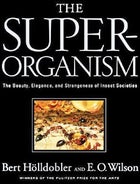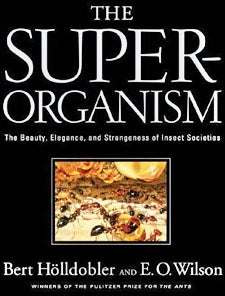After a half-century on his hands and knees, poking at bugs, Harvard ant geek and accidental eco-celebrity E.O. Wilson, 79, is back with The Superorganism: The Beauty, Elegance, and Strangeness of Insect Societies (W.W. Norton, $65), co-written with Bert HÖlldobler. It’s a follow-up of sorts to their 1991 Pulitzer Prize winner, The Ants, only this time the focus is on the sophisticated colonies formed by ants, honeybees, and termitescolonies so tightly organized that in many ways they function as individual creatures, or superorganisms. JASON DALEY talked to Wilson to find out how much termite mounds and, say, Cleveland have in common.
The Superorganism by E.O. Wilson
 by E.O. Wilson
by E.O. Wilson
So are there benefits to cooperative group living?
You will not find ants in Greenland, the Falkland Islands, Antarctica, or much north of the Arctic Circle, but they’re everywhere else. Ants are the most abundant animals on earth as a result of creating advanced colonial life as a superorganism.
Are humans part of a superorganism?
That’s a subject in great ferment. The social insects evolved in a completely different way from the lines that led to our species. But [in the future] we will definitely compare similarities and differences between superorganisms and human societies.
You recently finished a novel, about feuding developers and conservationists. How did it go?
After writing 25 nonfiction books, for the first time I could make up my own world. That was very pleasant.
But the environmental theme sounds real.
The human understanding of the environment is focused on the physicalprotecting soil and water. But if the living world goesplants and animals and insectswe will be in genuine trouble.
Do you ever get bored watching bugs?
No. It’s never tiresome hunting for new species, which lately I’ve been doing in the West Indies. For me it’s like taking a fishing tripand I never get tired of that.


